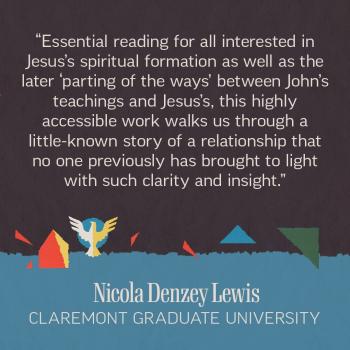Behind the Gospels: Understanding the Oral Tradition: Understanding the Oral Tradition
. Eve’s book is probably one of the most important books related to the historical Jesus and the Gospels to be published in recent years, since it brings together and evaluates the full range of New Testament scholars who have offered proposals in recent years related to memory and oral tradition. Its short length is not due to a lack of attention to detail, but rather the author’s knack for summing up key points succinctly. The first chapter interacts with the broader field of orality and memory studies to situate the New Testament in its ancient media situation, and offers six key characteristics of oral communication (pp.2-4), drawing on and interacting with Ong, Lord, Foley, Goody, and others. It is interesting that I recently had someone ask me whether form criticism as an approach to the Bible is defunct, because that represents one of the earliest attempts to take the study of folk literature into account when studying these texts, and however much older approaches along these lines may have been unduly shaped by scholars’ own setting in highly literate cultures, recent work on memory and orality is simply an attempt to make a better and more appropriate use of insights drawn from the same basic domain. We see this later in the book, for instance when Eve writes, “Oral tradition can preserve certain kinds of material effectively, but such material needs to be case in special memorable form, rather than merely relayed in the language of ordinary conversation. Narratives constructed along culturally familiar lines would be one such form; proverbs would be another” (p.99).
Eve interacts with scholars such as Kelber, Gerhardsson, Bailey, and Dunn, noting in response to the latter that the evidence which they have focused on shows that material can undergo rapid developments and then come into a form which is not original but which is nonetheless preserved effectively, and thus the relative stability of the Synoptic tradition across the Gospels does not show its stability prior to writing (p.112).
Eve suggests that a comparison between Paul and Mark is likely to provide useful clues about the inaccessible period of purely oral transmission, since we see evidence that material found its way into both. In the process, Eve addresses issues which mythicists have fixated on, noting the implausibility that Paul persecuted a religion that he knew nothing about, and that upon changing from persecutor to adherent he sought and received no additional information (pp.167-8). Eve also compares Mark and Josephus on John the Baptist. Both examples provide evidence of the flexibility and stability that orality studies have highlighted.
In his conclusion, Eve emphasizes how much we simply cannot know about oral performances in early Christianity. He emphasizes that the adoption of a one-size-fits-all approach is inappropriate, since we can well imagine that one particular context may have sought formal input from eyewitnesses, while in another the transmission may have been less formal and without input from such figures. He also notes that, when one starts with extreme trust or skepticism towards the sources, it is possible to confirm what one expects to find in a manner that is problematically circular (p.177). The overall evidence suggests that “the proper approach to the Jesus tradition should lie somewhere between the extremes of credulity and skepticism” – and he follows this with three succinct theses about oral tradition and memory that emerge from his study (p.178). Defining authenticity in terms of impartial video-like recording will mean that nothing in the Gospels, or any other ancient source, is likely to be judged authentic, whereas if the question is about whether something reflects the characteristic ways of speaking and acting of an individual, then much in the Gospels and other ancient sources may be judged authentic. He also insightfully asks which is more useful to a historian – the precise words of an ancient individual, recontextualized into a new literary setting that distorts their original meaning, or something that conveys the gist of the individual accurately without preserving precise words (p.182).
A nice surprise was seeing my Butler colleague Donald Braid mentioned in a footnote (p.104 n.61)!
This book is important because, to an extent that I have rarely seen elsewhere, the author not only seeks to engage what has been done previously both within and outside New Testament studies, but to do so in a way that highlights what we can realistically expect to achieve and what we cannot, given the constraints of our sources and the methods available to us. In an era in which we cannot help acknowledging that a positivistic approach to historical knowledge of the ancient world is simply not a viable option, we need to tackle the question of where to go from here. Eve’s book serves as a funnel, bringing together what had gone before. I am convinced that it will also serve as a funnel from which new discussions and insightful scholarship emerge going forward. I highly recommend it.













